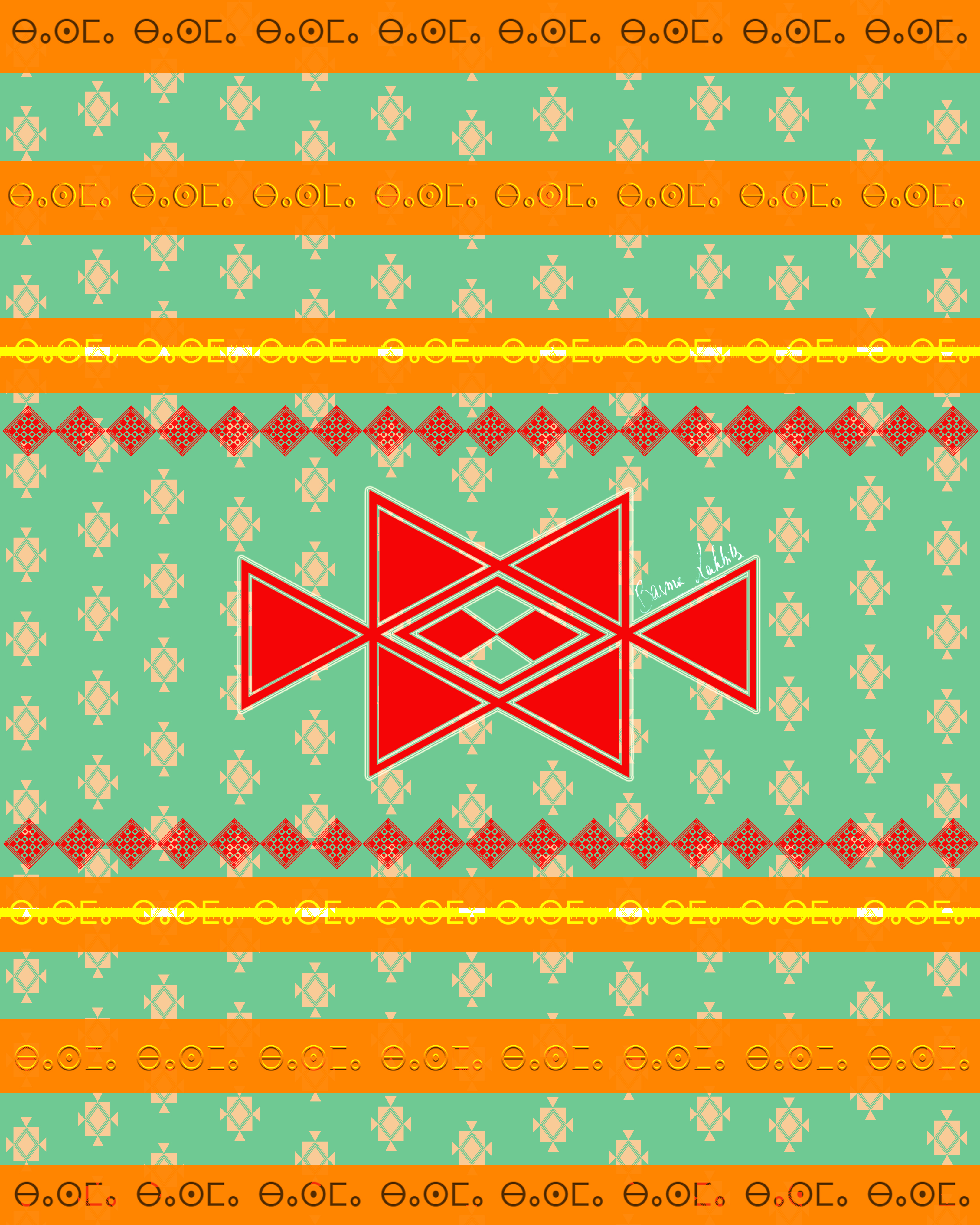
PART 1/3: BASMA’S ZARBIYA.
On the 26th of July, I took myself on a picnic. It was time to celebrate with God and my ancestors who I was. What better way than surrounded by food? Before going, I weaved a zarbiya with my ancestors. I couldn’t think of any better way to express myself. I chose a color between green and blue, reminding me of the Mediterranean Sea, which I carry in my heart, and the green mountains and hills that my parents left behind.
Every carpet has its own story. The woman or man who weave it, create their own narrative through their art. And so, I sat with my Berber ancestry, and I started layering patterns and symbols.
Layering two squares symbolize God’s fight against the curse and darkness, and so I wanted to layer multiple symbols. With my own hands, in an imprecise way, I sat down and listened. They say the diamond is a symbol of a belly and a uterus. The triangles represent water, my favorite element, and womanhood. Checkerboards of black and white tiles (here in red) represent a honey cake (I’m going to a picnic after all). But also it symbolizes the vagina, according to Makila Grasshoff in Symboles and Magic in the Arts of Kabyle Women, here represented as a nest from which “the honey of Life comes out”. All of this for me symbolizes the birth of my quest to bring back my ancestry, which actually, never really left. That’s why it’s in the middle and it is red as is the blood in my veins.
My writings mostly come from a dark place, but this piece is a celebration of life, womanhood, and unlistened voices. In Tunisia, you can find different types of carpets such as « mergoum » and « klim ». The Klim, inspired me to add those bright colored lines and horizontal as well as vertical symbols to decorate it. The presence of a large number of patterns on the mergoum, inspired me to overlay and add a lot of smaller details/symbols. I chose to add lines that are orange because it’s the brightest color I could think of, and for a long time I struggled to like it. Yet, it is on most of jbayb (djellabas) I own and so I chose it to celebrate my hometown. I also thought of mixing the red and yellow, Blood and Gold which represent my ancestors. Yellow represents also for others the sa7ara. However, I added beige as a symbol of Touaregs traveling through the desert and beige colored cities.
I wrote my name (Basma) in Tifinagh, an oral language not only taken from me but censored by so many politicians. Before going on this journey, I never wrote my name nor learned those letters. It was time, through an art that is a language, to not forget that there is more to ourselves. I was tired of the minimalism and smooth contours that our society demands. It was time to celebrate the colors, stories, talents, and uniqueness, of an art that flows in our veins.
PS: About the process: First, when I did it, I was very satisfied with the result, but then it wasn’t showing up on Instagram as I wanted it to. So I had to redo the measurements, and it became too geometrical, too asymmetrical. So I had to rework it so that things would « stick out », get mixed up, and appear more like something I wove with my hands.


